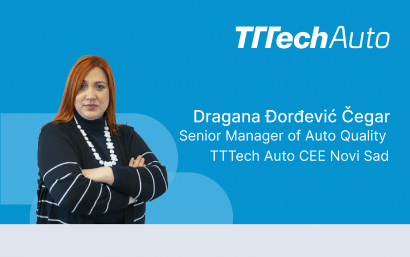We sat down with the Austrian organist and conductor, Martin Haselböck who is regarded as one of today's most important artists working in the world of historical performance.
After winning several international competitions, he gained an early reputation as an organ soloist, working with conductors such as Claudio Abbado, Lorin Maazel, Wolfgang Sawallisch, Riccardo Muti and many others.
Being a conductor, he understands how structure, technology and creativity come together to create uniform and wonderful sounds. Thus, he is the perfect person to describe this relation to us. In the world of classical music, the conductor is the person who orchestrates the performance by each individual musician into a synchronized musical piece of art. They are the key driver of the orchestra, the central ‘element’ of this highly efficient arrangement.
What is it about being a conductor that makes it your passion?
Being an Organist, I was used to creating big musical structures and mighty sounds alone and in dialogue with only my instrument (the pipe organ). As a conductor you have to create your music with the help, and through the skills, of many musicians. You must lead them and structure their work and you can achieve great results if you focus all their artistic and technical input into one final interpretation.
How does creativity and structure go hand in hand when it comes to conducting an orchestra?
Both are the essential basics for great interpretations: structure on one side is the “hardware” of performance, the musical instruments, developed over centuries, the musicians, trained since childhood to master these instruments, the notation of the music, which tells each orchestra member when and how to play their parts and finally the (sign) language of the conductor, which has to be understood by everybody on stage.Creativity is needed for interpretation. The conductor’s creativity is based on experience, knowledge and the ability to communicate ideas – the conductor must grant a certain level of creative work to each musician to achieve high class performances
What does technology and music have in common, in your point of view?
Technology, as we know it today, is the result of generations, of centuries of thinking and development. It is the work of great inventors and engineers. So is music: highly developed music needs a notation, a common language for each performer. It needs high class musical instruments; it needs spaces to allow the sound to develop and it needs the cooperation of many trained and experienced people to achieve results, to move forward with our art
As the great philosopher Aurelius Augustinus described, as early as 400 D.C.: Musica ist Ars bene movendi. For him music, arithmetic, astronomy and geometry were sister subjects - based on the same basic principles expressed in numbers. Our digital age makes us feel how close technology and music are connected.
Read more about Orchestration

Do more orchestra members mean that the conductor’s job becomes more demanding?
Yes and no. As in business, a discussion with three board members can be harder than talking to a general assembly. It is necessary to establish a common agreement; about the results that need to be achieved. In a small orchestra a single player has more possibilities to express ideas, in big orchestras the section leaders or the wind soloists take the position of head of departments and speak for their colleagues - if the respect between conductor and orchestra is mutual and there is a common sense of style and interpretation (based on working together for a longer period) the number of players doesn’t make so much difference.
We believe there is something mathematical, but also magical in your actions. How do you see this?
All music is based on numbers. We are permanently confronted with proportions, numerological complexes when we hear or read music. The ways to tune our instruments are mathematical, composers were proud to include the Golden Cut in their proportions. In classical music we are trained to feel, to hear these proportions and the conducting figures are based on these mathematical rules.
Magical? In some ways we are all actors, we are magicians with the goal to take our audience to a magical world beyond our reality.
If you were an engineer, what would you build and why?
A time machine: we have developed space (to a certain degree) but we are (still) blocked from entering time levels behind or in front of us.
How would you describe conducting to someone who is not familiar to music?
The ability to persuade a group of musicians to give all their energy, their virtuosity, their knowledge to produce some great music together.
What defines a successful musical performance, from your point of view?
Perfection but also deep emotion and the direct communication with the audience.
Accelerate your journey towards highly automated driving with MotionWise safety software platform. MotionWise delivers safety by design and fail-operational performance while managing the high complexity of solution elements. As a result, OEMs and Tier 1 suppliers can benefit from faster time-to-market for their automated driving projects and increased competitive edge at reduced costs.
Stay informed about the most recent technological findings in the automotive industry - visit us at www.tttech-auto.com and follow us on LinkedIn for more on this exciting topic.
Related Insights


